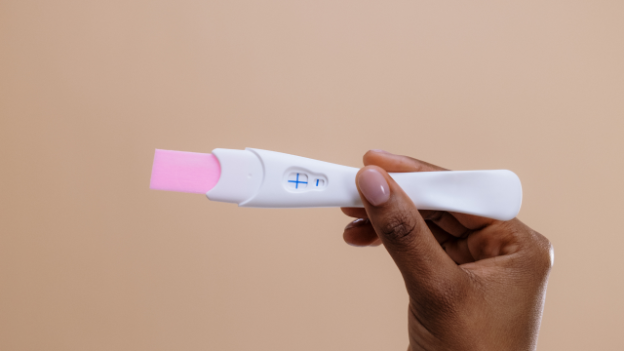Course
The Importance of Preconception Care
Course Highlights
- In this course we will learn about the value of preconception care, and why it is important for healthcare providers to be aware of the many benefits it poses on healthy pregnancies.
- You’ll also learn the basics of folic acid supplementation, as well as the impact that one’s life course can have on pregnancy outcomes.
- You’ll leave this course with a broader understanding of the difference between preconception and prenatal care education.
About
Contact Hours Awarded: 2

Course By:
Terri Thompson
DNP, RN
Begin Now
Read Course | Complete Survey | Claim Credit
➀ Read and Learn
The following course content
Introduction
Everyone knows someone who has had a baby or knows someone who wants to have a baby, either in the near or distant future. Some women imagine themselves having children and have many of the details already planned out, while others know they want children eventually but have not developed a plan for it. In most cases, women who are actively trying to get pregnant also begin focusing on their overall health before their pregnancy. Many of them discuss their pregnancy plan with their family and friends long before discussing it with their healthcare providers. Preconception care discussions can be done in any healthcare setting as well as out in the community; therefore, all healthcare providers need to understand what preconception care is, as well as its value to patients.

Self Quiz
Ask yourself...
- Why do women focus on their health before pregnancy?
- Why is it important to make healthy changes before pregnancy?
Preconception Care
Preconception care is the health of a woman before getting pregnant; meaning, a woman is receiving education and has become aware of any underlying health conditions that she may have and the potential risks they could present if she pursues pregnancy (23). Many preexisting health conditions can harm a pregnancy, which makes it important to address these health conditions before getting pregnant (17). However, preconception care is not just for women, it also includes the patient’s partner; men should also receive preconception care education so they can improve their health, develop healthy habits, and support their partner through pregnancy (21).
Preconception care is also referred to as ‘preconception healthcare’ or ‘pre-pregnant care.’ Regardless of the term utilized, preconception care is the medical care that a patient receives from their provider to achieve both a healthy pregnancy and healthy pregnancy outcome(s) (2, 10).

Self Quiz
Ask yourself...
- What is the difference between preconception care and interconception care?
-
Interconception Care
Interconception care is the care that a woman receives between pregnancies to help improve her health outcomes, the fetus, and the newborn, in the event of a planned or unplanned pregnancy (17). Interconception care involves helping the woman understand the importance of spacing out pregnancies and waiting at least 18 months before getting pregnant again, which will help promote healthy birth outcomes for the mother, fetus, and newborn (17).
In many clinics, interconception care may be discussed with women who bring their children in for a well-child visit. These clinic visits offer the healthcare provider the opportunity to assess any risks and provide interventions (17).


Self Quiz
Ask yourself...
- What is preconception planning?
- What aspects of health need to be included in preconception planning?
Preconception Care Planning
The importance of preconception care planning lies in getting the patient’s body healthy, as well as maintaining any potential health issues before planning a pregnancy; for example, some of these health changes may be to stop smoking (11).
Smoking can make it more difficult for a patient to get pregnant and involves these risk factors:
- Preterm delivery
- Low-birth-weight infant
- Birth defects, including cleft lip and cleft palate
- Sudden Infant Death Syndrome (SIDS) (11).
Smoking can also damage the male partner’s sperm and contribute to erectile dysfunction (11).
Other health changes include stopping the use of drugs or alcohol. Street drugs include cocaine, ecstasy, methamphetamines, heroin, and marijuana, but may also include the abuse of prescription drugs (18).
Street drugs and prescription drugs increase the risks of:
- Infertility
- Miscarriages
- Placental issues (can alter the oxygen and blood supply to the fetus)
- Preterm labor
- Preterm delivery
- Low birth weight
Street and prescription drugs can alter the fetus’s brain development, potentially causing both learning and behavioral issues later in the child’s life. Additionally, the usage of these drugs during pregnancy can cause heart defects, birth defects, Neonatal Abstinence Syndrome (withdrawal from drugs), and stillbirth (18).
Due to it passing through the placenta, umbilical cord, and the fetus, alcohol should not be used before getting pregnant or during pregnancy; there is no safe consumption amount during pregnancy (6).
The use of alcohol during pregnancy can cause:
- Low birth weight
- Fetal Alcohol Spectrum Disorder: a defect with abnormal facial features, a small head, and abnormal creases in the hands
- Developmental problems
- Hearing and vision issues
- Issues with the development of the fetal heart, kidneys, and bones
(6)
There are positive health changes that all patients should make to increase their preconception health, these include:
- Losing weight
- Developing healthy dietary habits
- Exercising regularly
- Normalizing hemoglobin A1c if diabetic
- Normalizing blood pressure for those with hypertension
- Managing mental health issues and medications
- Maintaining healthy relationships
- Ensuring vaccinations are up to date
- Treating any sexually transmitted infections
(9)

Self Quiz
Ask yourself...
- What are important vitamins or nutrients that can affect fetal development and should be used before pregnancy?
Folic Acid Supplementation
Folic acid is a man-made form of folate that is often found in many foods and vitamins; it aids in creating healthy cells in the body (22, 25). Folate is commonly found in foods like green leafy vegetables, fruits, legumes, nuts, and some enriched breads and cereals.
Additionally, folate and folic acid help the body make new red blood cells, which carry oxygen throughout the entire body (22). If a patient does not have enough red blood cells circulating throughout their body, they are anemic; anemia can have some physical effects on the body, which include paleness, tiredness, and fatigue (22). If a patient is anemic before and during pregnancy, this may increase the incidence of maternal mortality, and she will be at risk of having a premature birth or a low-birth-weight infant (3). For this reason, folic acid is essential. As a preventative measure, the Center for Disease Control and Prevention (CDC) encourages all women of childbearing age to take 400 micrograms (mcg) of folic acid per day, in addition to consuming foods that are high in folate/folic acid (9).
The first eight weeks of pregnancy are considered the most critical, as all the embryo’s vital organs are developing (17, 23, 26, 27). Folic acid, the essential B vitamin, is essential because it significantly decreases the incidence of neural tube defects, cleft lip palate, and brain damage in the fetus; for example, consuming folic acid daily before pregnancy can decrease the risk by up to 70% (9, 16).
These neural tube defects include spina bifida and anencephaly (16, 22, 25). Spina bifida is when part of the spinal cord is on the outside of the body on the baby’s lower back, and anencephaly refers to the lack of brain development (16). Neural tube defects are common and affect approximately 2,500 births each year in the U.S. (16, 17, 22, 25). Additionally, neural tube defects are the second most common cause of serious birth defects, and hospitalization along with care can be costly for the parents (16, 22, 25).
As for folic acid supplementation for men, studies have shown that folic acid may not boost fertility, however, they are encouraged to consume 400 mcg of supplements each day (1). The benefits of folic acid, not related to fertility, include reducing the risk of heart disease and macular degeneration, helping with the treatment of depression, and protecting against the impact of mental and emotional disorders (15). Additional studies have identified that folic acid can prevent or slow memory loss associated with aging (15).


Self Quiz
Ask yourself...
- What is a preconception health care visit?
- What is done on these visits?
- Does insurance cover pre-conception health care visits?
Preconception Healthcare Visit
Many patients who plan to get pregnant will make a preconception care appointment with their OB/GYN or other healthcare provider, such as a Family Practitioner or Nurse Practitioner. During this appointment, the patient’s diet, activity, weight concerns, medical history, family history, mental health issues, and social histories, such as domestic violence and healthy relationships, will be assessed (2).
It is important to discuss current medications, underlying or chronic health conditions, and how these conditions can impact a pregnancy. Additionally, the provider will ask about previous pregnancies, the spacing between pregnancies, as well as previous pregnancy outcomes (12). This preconception care visit will give the woman an opportunity to create a plan as to when she will try to conceive.
Under the Affordable Care Act, women’s preventative healthcare is covered under the law. The Human Health Services (HHS) recognizes that women have unique health needs throughout their lifespan, and all women should be able to have these needs assessed (14). Among these assessments are mammograms, screenings for cancers, preconception-interconception care, and prenatal care (14).

Self Quiz
Ask yourself...
- What is the difference between preconception health care and prenatal care?
Preconception vs. Prenatal Care
The goal of preconception care is getting the body healthy, addressing chronic diseases, assessing the need for immunizations, reviewing the effects of medications on pregnancy, and addressing any other underlying issues to improve outcomes prior to pregnancy (10).
Once a woman becomes pregnant, she will then receive prenatal care. Getting early and regular checkups throughout pregnancy will improve the chances of having a healthy pregnancy and promote a healthy birth (24). Prenatal care involves monitoring the patient and baby, which includes routine testing and frequent visits to a provider throughout the pregnancy; prenatal care will continue until the patient delivers (24).
Case Study
Jack (34) and Annie (32) have been married for two years and they have five cats.
Jack is a long-haul truck driver who owns his own truck and trucking company. He works long hours and drives in his truck for up to 10 hours per day, approximately 5-6 days per week; he sleeps in the cab of his truck each night and gets about six hours of sleep. He drinks about three cups of coffee each morning, with three packets of sugar in each cup. Most of Jack’s meals are from fast-food restaurants, and he does not care for fruits, vegetables, or water. Roughly, he drinks two two-liter bottles of soda each day. On top of this, he does not currently take any vitamins or supplements. Jack has not been diagnosed with any chronic health conditions; however, he has noticed that he feels more sluggish than normal. He believes his sluggishness is due to his diet and has noticed that it is affecting his energy level.
As per Jack’s family history, Jack’s father is morbidly obese with a BMI of 42, has high cholesterol, is an uncontrolled type 2 diabetic on insulin, has chronic hypertension, and is on antihypertensives; he also was a truck driver. Jack’s mother passed away from breast cancer when Jack was 14. As Jack was growing up, his father did not cook well. Their diet consisted of fast food, pasta, soups, and sandwiches. Jack’s father has not changed his diet, and he continues to have unhealthy dieting habits.
Annie works full-time at a veterinary clinic and helps with pet boarding. As an animal lover, she is responsible for changing the litter box at her house, and with five cats, this chore occurs often.
In the mornings, she only has one cup of coffee per day, but that one cup is 30 ounces and contains a high level of sugar. Due to her husband being gone most of the time, Annie also eats out a lot. Similarly to Jack, Annie also does not like vegetables; however, she will eat an iceberg lettuce salad each day, just to make herself feel like she is being healthy. To help her relax, Annie drinks one or two glasses of wine each night.
As for Annie’s family history, Annie’s parents have sedentary lifestyles. Her dad is very thin, with a BMI of 18.4, which is within the underweight range for his height and weight (5). Her dad is a smoker and consumes roughly three packs per day and has done this for the past 40 years; he also drinks two to three glasses of scotch every evening. He does not have any underlying health problems that he is aware of but has not seen a healthcare provider in six years.
As for Annie’s mother, she is in the obese range for her BMI of 48.8, and the BMI range for obesity is 30.0 and above (5). She has high cholesterol, type 2 diabetes, and takes insulin daily. She also has hypertension and is on antihypertensives. She eats more sweets than she should and has high blood sugar. Additionally, she loves to cook and bake, so she brings Annie several baked goods each week.
At Annie’s last yearly checkup with her provider, she was told that her blood pressure was “a little higher than normal,” and that her hemoglobin A1c was in the prediabetic range. She was told to lose some weight and to follow up in three months for a reevaluation; she forgot. Annie stopped taking oral contraceptives a few months ago and is using ‘protection’ to prevent pregnancy. Jack is not home much so Annie does not worry about contraception.
Both Jack and Annie have sedentary jobs, as well as sedentary lifestyles. They have both gained over 30 pounds since getting married. Recently, they have decided that they would like to start their family in a few months. Annie has made a preconception care appointment with her provider.
- What health issues do you think Annie’s Provider will address during that appointment? What medications do you think the Provider will prescribe to Annie, at this appointment?
- Do you think that the Provider will ask about the health of Jack during this appointment?
Annie is visiting her provider for her preconception care appointment. Her vitals, height and weight, and BMI read:
- BP 142/88
- Pulse 88
- RR 18
- Temp 98.6 (orally).
- Her height is 5’2”
- 169lbs
- BMI was 30.9
A normal BMI for Annie is 18.5-24.9, with a normal weight of 101 to 136 pounds. According to the BMI calculator, Annie is considered obese (5).
Annie’s labs determined that her Hemoglobin A1c was 6.0%, putting her in the prediabetic range; the normal A1c is below 5.7% and is 6.5% or higher for the diagnosis of diabetes (7). On top of this, her vaccinations were not up to date, and she received her MMR and Hepatitis B immunizations. The provider recommended that Annie lose 33 to 40 pounds before getting pregnant; she was referred to a nutritionist to help her create a healthy diet plan. Additionally, the provider recommended that she stop drinking wine each evening.
She was prescribed 400 mcg to be taken daily in preparation for pregnancy and to prevent neural tube defects in her future baby. Since Annie has stopped taking her oral contraceptives, she will need to use birth control such as condoms to prevent pregnancy.
She will have a follow-up appointment next week to reassess her BP, and then she will have an additional appointment in four months to evaluate her weight loss and hemoglobin A1c. On top of this, the provider encouraged Annie to have someone else change the cat litter both at work and at home to prevent toxoplasmosis. Jack was encouraged to visit his provider for a check-up.

Self Quiz
Ask yourself...
- Do men need to receive preconception care? What are some health issues that men may have that can affect their fertility?
Preconception Health and Planning for Men
Although the woman carries the child, the health of the male partner is also very important; plus, there are several things that men can do before planning a pregnancy. Just like women, men should be screened and treated for sexually transmitted infections (STIs) (21). STIs can cause significant, even life-threatening issues, including death to the fetus.
Additionally, men should stop smoking and using drugs, and alcohol, as using these substances can increase the chance of infertility (21). Secondhand smoke can increase the mother’s chances of delivering a low birthweight infant and can also increase the risk of SIDS in the infant (8).
Men should also focus on underlying health issues, these include obesity, type 1 diabetes, cancers, infections, prescribed medications that cause infertility, mental illness, and other chronic illnesses that could prevent fertility or decrease sperm count (21). Male sperm count can be negatively influenced due to injuries, infections, or surgeries (20). Additionally, males tend to have less sperm count and motility after the age of 40, which can decrease the couple’s ability to conceive (4). Underlying health issues may be attributed to high amounts of stress. The healthcare provider may assess the male’s stress level and coping mechanisms for these stressors (21).
Another aspect that should be assessed in males is their exposure to toxic substances. These substances include fertilizers, chemicals, rat poisoning, pest spray, and cat or rodent feces (9). These harmful substances can damage the reproductive system and cause infertility in both males and females (9).
A sedentary lifestyle and prolonged sitting can also impact a man’s fertility. Prolonged periods of sitting can cause testicular overheating, which can impact the quality and amount of sperm (16). Additionally, wearing tight-fitting clothing, frequent use of hot tubs, and frequent use of computers on one’s lap can also cause overheating of the testicles (19).
Case Study (Continued)
When Jack came home from his last road trip, Annie had made him an appointment with his healthcare provider. Jack’s vitals, height, and weight, as well as BMI, read:
- BP: 142/94
- Pulse: 76
- RR: 18
- Temp: 98.0 (orally).
- 6’2″
- 265 lbs.
- BMI: 34
Jack has gained fifty pounds in the past two years, and his BMI places him in the obese category. The BMI calculator indicates that he should weigh between 144 and 194 lbs., and the provider recommended that he lose 70 pounds (5). He was referred to a nutritionist.
Due to his sedentary profession, Jack’s provider discussed the risks associated with decreased sperm counts when sitting for long periods, and recommended he receive a sperm count if Annie does not get pregnant within six to 12 months of unprotected intercourse. Multiple laboratory tests were ordered, including cholesterol and Hgb A1c. Jack will need to follow up for a blood pressure check in a week. If he continues to be hypertensive, medications for blood pressure may be ordered.
Upon receiving the lab results, it was determined that Jack’s A1c was 6.4%, making him prediabetic (7). After Jack’s appointment, he and Annie decided that they would commit to improving their health so that they could start their family soon.

Self Quiz
Ask yourself...
- Are all pregnancies planned?
- What percentage of pregnancies are unplanned?
- Do you know someone who has had an unplanned or unintended pregnancy?
The Incidence of Unplanned Pregnancies
How many people do you know who have told you that their baby was a ‘surprise?’
Approximately 45-50% of all pregnancies are unplanned or unintended (23). For this reason, women of childbearing age (ages 15-44) are encouraged to focus on their health, whether they are currently planning a pregnancy or not.
Women whose pregnancies are unplanned are at higher risk of premature labor, preterm delivery, and having a low-birth-weight baby (2, 27). Preterm labor and preterm birth occur before 37 completed gestation weeks (27). A low birthweight infant is an infant who weighs less than 2500 g (5.5lb) at the time of birth (26). Also, women who are unhealthy or have underlying health problems are at increased risk of having pregnancy-related issues such as gestational diabetes or pregnancy-induced hypertension (2).


Self Quiz
Ask yourself...
- What are some underlying or chronic health problems that can cause complications in pregnancy?
Pregnancy Complications Related to Underlying Health Problems
If a woman gets pregnant, and she has underlying health problems, these problems could impact her health and the health of the fetus and newborn. Some of these underlying health problems include obesity, being underweight, eating disorders, diabetes, hypertension, mental health issues, and seizures, to name a few (2).
A woman who gains excessive weight during pregnancy is at increased risk of pregnancy-related complications, such as diabetes, preeclampsia/eclampsia, preterm deliveries, and gestational diabetes (2). Additionally, a woman who is overweight or obese can have macrosomia (a baby who weighs 8 lbs.13 ounces or more), putting them at risk of having a baby with birth defects, risk of birth injury, and increased risk of cesarean section delivery (2).
Underweight women are also at risk of pregnancy-related complications. These complications can also affect the fetus and newborn. Underweight women are at risk of having low-birth-weight babies, as well as preterm deliveries (2).
The Impact of Life Course on Preconception Health
The life course approach focuses on what events have occurred in an individual’s or family unit’s life experiences and events that occurred across the generations. The focus is on current patterns of health and diseases, with the understanding that both past and present experiences are impacted by social, economic, and cultural influences (13). Reviewing one’s life course can be utilized to evaluate physical and social hazards that may have occurred during the gestational period, one’s childhood, adolescence, and young adulthood, and into midlife. These hazards may affect the risk of chronic diseases and health outcomes later in one’s life (13).
One’s life course can impact their ability to conceive or carry a pregnancy. During the preconception healthcare appointment, providers assess family history, social history, socioeconomic status, risk factors, and environmental factors that may impact the health of individuals and their families (13).
The life course approach can also help to identify health disparities in vulnerable populations. In viewing the life course, health and economic concerns can be identified, which may cause a pregnancy to be at increased risk (13).
Case Study (Continued)
In evaluating Jack and Annie’s life course, what issues can you identify, based on their family history and upbringing?
Jack had lost his mother at age 14, and his father was a single parent. His dad was also a truck driver and was morbidly obese. He did not cook and fed his sons fast foods, pasta, soups, and sandwiches. When his father was on the road, Jack would prepare meals for himself and his brother. Jack is falling into the same health habits as his father.
Annie’s father was a smoker and continues to smoke three packs per day (which is 60 cigarettes per day). Annie has been exposed to secondhand smoke her whole life. Although Jack and Annie are not smokers, Annie had decades of exposure to secondhand smoke, which may have caused some negative effects on her body. Additionally, her father drinks two to three glasses of scotch per day and has for many decades. Before changing her diet, Annie drank one to two glasses of wine each evening.
Annie’s mother is obese, and a type two diabetic who has had a history of uncontrolled blood sugars and noncompliance with her diet and medications. Additionally, her mother also has high cholesterol and hypertension. Annie was initially in the BMI range of obese and had a Hgb A1c that was in the prediabetic range (5, 7).
During Jack and Annie’s healthcare appointments, the provider evaluated their risks, including family histories, current and previous health issues, current or previous environmental hazards, as well as lifestyles to improve their pregnancy outcomes for the future. Both Jack and Annie were raised with unhealthy health habits, and these habits continued in their adulthood. Fortunately, they were able to change their diet and unhealthy practices to ensure they would both be healthy parents.

Conclusion
Preconception care is the health of the woman and her partner prior to pregnancy. The importance lies in addressing preexisting and underlying health issues before pregnancy to improve pregnancy outcomes for the mother, fetus, and newborn. Interconception care is also important in improving birth outcomes of future pregnancies.
Addressing preexisting health habits, dietary habits, and environmental issues that have occurred throughout one’s life course will also be effective in promoting pregnancy outcomes. The woman and her partner should improve their health, address any underlying health issues, and change existing unhealthy habits before planning a pregnancy. The woman and her partner should maintain these healthy habits in preparation for family planning.
References + Disclaimer
- American Academy of Family Physicians (2020). Folic acid/Zinc supplements fail to boost fertility in men. https://www.aafp.org/news/health-of-the-public/20200123zincfolicacid.html.
- American College of Obstetricians and Gynecologists (2021). Good health before pregnancy: Pre-pregnancy care. https://www.acog.org/womens-health/faqs/good-health-before-pregnancy-prepregnancy-care.
- American Pregnancy Association (2024). Anemia during pregnancy. https://americanpregnancy.org/healthy-pregnancy/pregnancy-concerns/anemia-during-pregnancy/.
- Bennett, C. (2020). Male age and fertility. https://www.news-medical.net/health/Male-Age-and-Fertility.aspx.
- Center for Disease Control and Prevention (2022). Adult BMI Calculator. https://www.cdc.gov/healthyweight/assessing/bmi/adult_bmi/english_bmi_calculator/bmi_calculator.html.
- Center for Disease Control and Prevention (2023). Alcohol use during pregnancy. https://www.cdc.gov/ncbddd/fasd/alcohol-use.html.
- Center for Disease Control and Prevention (2022). All about your A1c. https://www.cdc.gov/diabetes/managing/managing-blood-sugar/a1c.html.
- Center for Disease Control and Prevention (2022). Health problems caused by secondhand smoke. https://www.cdc.gov/tobacco/secondhand-smoke/health.html.
- Center for Disease Control and Prevention (2023). Planning for pregnancy. https://www.cdc.gov/preconception/planning.html.
- Center for Disease Control and Prevention (2023). Preconception health. https://www.cdc.gov/preconception/overview.html#:~:text=Preconception%20health%20care%20is%20the, his%20or%20her%20unique%20needs.
- Centers for Disease Control and Prevention (2023). Smoking, pregnancy, and babies. https://www.cdc.gov/tobacco/campaign/tips/diseases/pregnancy.html.
- Fowler, J. R., Jenkins, S.M. & Jack, B. W. (2023). Preconception counseling. https://www.ncbi.nlm.nih.gov/books/NBK441880/.
- Hall, J., Chawla, M., Watson, D., Jacob, C.M., Shoenaker, D. & Connolly, A. (2023). Addressing reproductive health needs across the life course: an integrated, community- based model combining contraception and precontraception care. Health Policy 8(1): E76-E84. 10.1016/S2468-2667(22)00254-7
- Health Resource and Services Administration (2024). Women’s preventative services guidelines. https://www.hrsa.gov/womens-guidelines.
- Improvememory.org (n.d.). 6 effects of folic acid on the brain. https://www.improvememory.org/blog-posts/how-to-improve-memory/vitamins-minerals-supplements/6-effects-of-folic-acid-on-the-brain/.
- John Hopkins Medicine (2024). Neural tube defects. https://www.hopkinsmedicine.org/health/conditions-and-diseases/neural-tube-defects.
- March of Dimes (2024). Getting ready for pregnancy: Preconception health. https://www.marchofdimes.org/find-support/topics/planning-baby/getting-ready-pregnancy-preconception-health.
- March of Dimes (2024). Street drugs and pregnancy. https://www.marchofdimes.org/find-support/topics/pregnancy/street-drugs-and-pregnancy.
- Mayo Clinic (2022). Low sperm count. https://www.mayoclinic.org/diseases-conditions/low-sperm-count/symptoms-causes/syc-20374585.
- Mayo Clinic (2022). Male infertility. https://www.mayoclinic.org/diseases-conditions/male-infertility/symptoms-causes/syc-20374773.
- O’Brien, A.P., Hurley, J., Linsley, P., McNeil, K. A., Fletcher, R., & Aitken, J. R. (2018).
- Men’s preconception health: A primary health-care viewpoint. American Journal of Men’s Health 12(5), 1575-1581. https://www.ncbi.nlm.nih.gov/pmc/articles/PMC6142132/.
- Office of Women’s Health (2021). Folic acid. https://www.womenshealth.gov/a-z-topics/folic-acid.
- Office of Women’s Health (2021). Preconception health. https://www.womenshealth.gov/pregnancy/you-get-pregnant/preconception-health.
- Planned Parenthood (2024). Prenatal care. https://www.plannedparenthood.org/learn/pregnancy/prenatal-care.
- U.S. National Library of Medicine (2023). Folic acid. https://medlineplus.gov/folicacid.html.
- World Health Organization ([WHO], 2024). Preterm and low birth weight infants. https://www.who.int/teams/maternal-newborn-child-adolescent-health-and-ageing/newborn-health/preterm-and-low-birth-weight/.
- World Health Organization (WHO). (2023). Preterm birth. https://www.who.int/news-room/fact-sheets/detail/preterm-birth.
Disclaimer:
Use of Course Content. The courses provided by NCC are based on industry knowledge and input from professional nurses, experts, practitioners, and other individuals and institutions. The information presented in this course is intended solely for the use of healthcare professionals taking this course, for credit, from NCC. The information is designed to assist healthcare professionals, including nurses, in addressing issues associated with healthcare. The information provided in this course is general in nature and is not designed to address any specific situation. This publication in no way absolves facilities of their responsibility for the appropriate orientation of healthcare professionals. Hospitals or other organizations using this publication as a part of their own orientation processes should review the contents of this publication to ensure accuracy and compliance before using this publication. Knowledge, procedures or insight gained from the Student in the course of taking classes provided by NCC may be used at the Student’s discretion during their course of work or otherwise in a professional capacity. The Student understands and agrees that NCC shall not be held liable for any acts, errors, advice or omissions provided by the Student based on knowledge or advice acquired by NCC. The Student is solely responsible for his/her own actions, even if information and/or education was acquired from a NCC course pertaining to that action or actions. By clicking “complete” you are agreeing to these terms of use.
➁ Complete Survey
Give us your thoughts and feedback
➂ Click Complete
To receive your certificate

